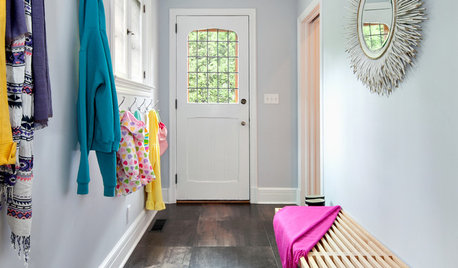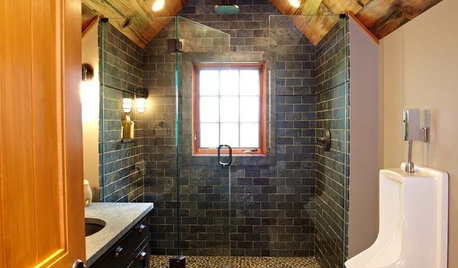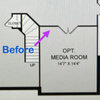Wet and Smelly Basement Wall
TeeeGeee
10 years ago
Related Stories

REMODELING GUIDES11 Reasons to Love Wall-to-Wall Carpeting Again
Is it time to kick the hard stuff? Your feet, wallet and downstairs neighbors may be nodding
Full Story
MUDROOMSHouzz Call: We Want to See Your Hardworking Mudroom
The modern mudroom houses everything from wet boots to workstations. Proud of your space? Inspire us with your photos and tips
Full Story
BATHROOM DESIGNWood in the Bathroom? Absolutely!
Wet places and wood can be a match made in design heaven — see great examples and get tips for sealing and installing bathroom wood here
Full Story
BASEMENTSReaders' Choice: The 10 Most Popular Basements of 2012
With full bars, pool tables, big-screen TVs and more, these converted basements wowed Houzzers on a whole other level
Full Story
BASEMENTSBasement of the Week: Amenities Aplenty in Minnesota
Whatever you could want in a finished basement, this transitional-style stunner has it: a bar, billiards, an office, a guest room and more
Full Story
BASEMENTSHouzz Tour: Swank Style for a Fully Stocked Basement
Tucking into plush seating or the steam shower, curling up with wine or a movie, these homeowners can do it in utmost comfort
Full Story
LIVING ROOMSBelow My Houzz: An Inviting Basement With Industrial Edge
Reconfiguring a cramped, damp basement opens up a new world of sleek, functional spaces
Full Story
BASEMENTS10 Ideas for an Anything-but-Boring Basement
Let your imagination run wild and get the most bang from your basement
Full Story
BASEMENTSDesign Workshop: Is It Time to Let Basements Become Extinct?
Costly and often unnecessary, basements may become obsolete — if they aren’t already. Here are responses to every reason to keep them around
Full Story
REMODELING GUIDES10 Tips for Renovating Your Basement
A professional contractor shares her tips on what to consider before you commit to a basement remodel
Full StoryMore Discussions








worthy
Related Professionals
Athens General Contractors · Leon Valley General Contractors · Longview General Contractors · Panama City General Contractors · Plano General Contractors · Tamarac General Contractors · West Lafayette General Contractors · Lomita Interior Designers & Decorators · Bonney Lake Architects & Building Designers · Portage Architects & Building Designers · Saint James Architects & Building Designers · Washington Architects & Building Designers · Cottage Lake Flooring Contractors · Land O' Lakes Flooring Contractors · Morgan Hill Flooring Contractors